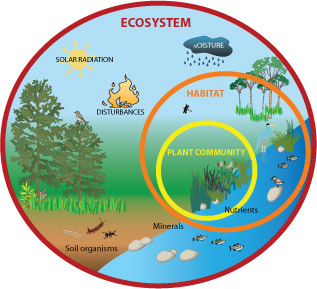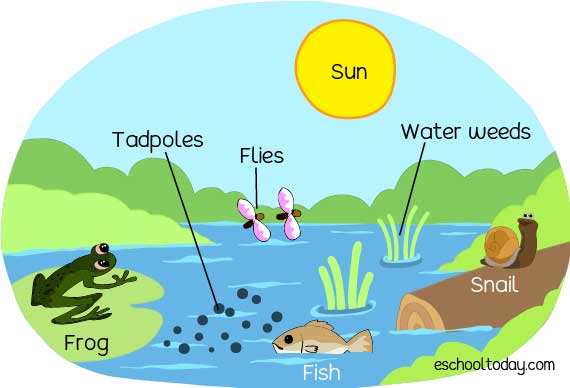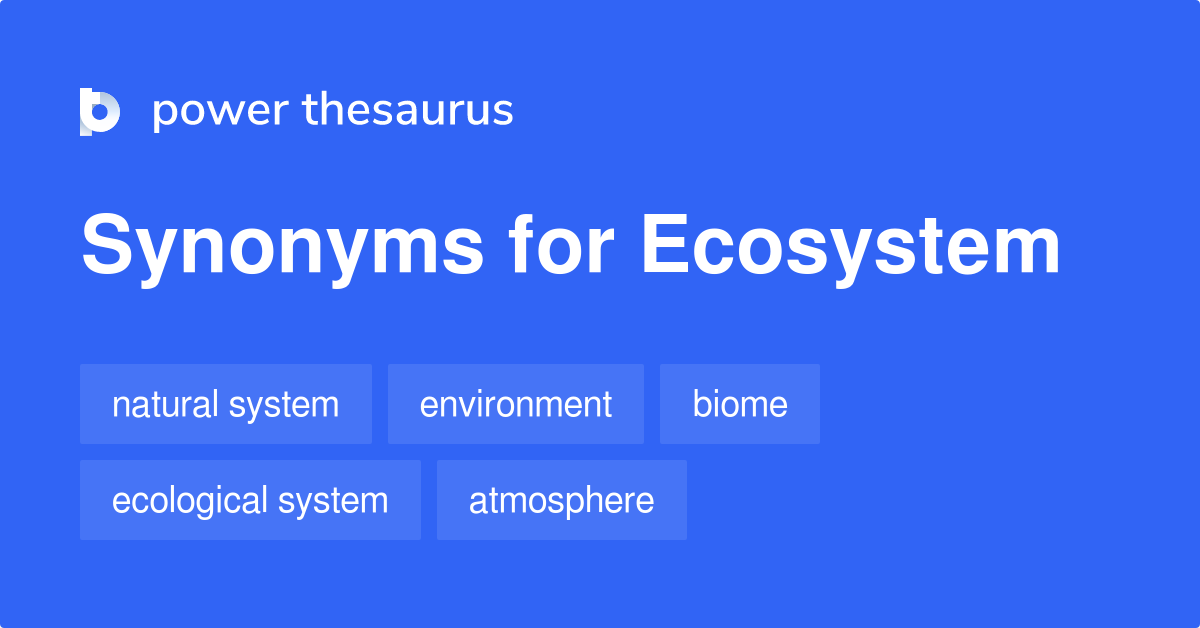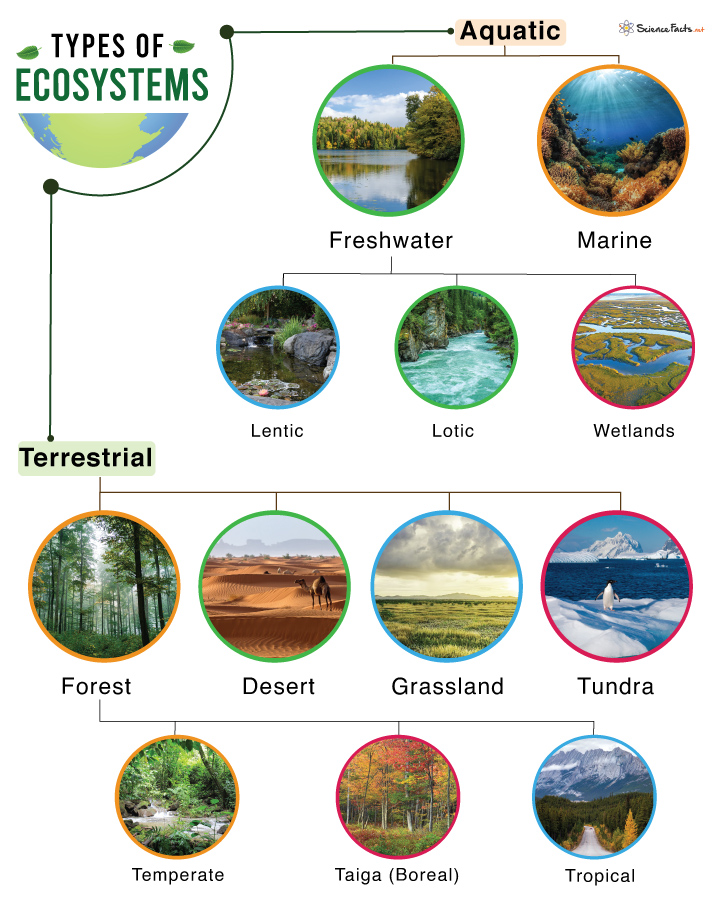Topic what is ecosystem in science: Discover the essence of ecosystems in science, where life interconnects in a delicate balance, shaping our world"s biodiversity and sustainability.
Table of Content
- What are the components studied in ecosystem science?
- Definition and Importance of Ecosystems
- Components of Ecosystems: Biotic and Abiotic Elements
- Types of Ecosystems: Terrestrial, Aquatic, and More
- Energy Flow and Nutrient Cycles in Ecosystems
- Interactions and Relationships within Ecosystems
- YOUTUBE: What Is An Ecosystem? | FuseSchool
- Ecosystem Services and Human Benefits
- Threats to Ecosystems and Conservation Efforts
- Case Studies: Ecosystems Around the World
- Emerging Research and Future Directions in Ecosystem Science
What are the components studied in ecosystem science?
In ecosystem science, various components are studied to understand the inter-relationships and functioning of ecosystems. These components include:
- Living organisms: This includes plants, animals, and microorganisms that inhabit a particular ecosystem.
- Physical features: The abiotic factors such as climate, temperature, topography, soil composition, and water availability that influence the ecosystem.
- Biochemical processes: The chemical reactions and cycles that occur within an ecosystem, such as nutrient cycling, photosynthesis, respiration, and decomposition.
- Natural phenomena: Natural events like fires, floods, and seasonal changes that impact the ecosystem and shape its dynamics.
- Human activities: The impact of human actions on ecosystems, including deforestation, pollution, habitat destruction, and resource extraction.
By studying these components, ecosystem scientists aim to gain insights into the functioning, resilience, and sustainability of ecosystems, and to inform management and conservation efforts.
READ MORE:
Definition and Importance of Ecosystems
An ecosystem encompasses a dynamic community of living organisms (biotic factors) interacting with their non-living surroundings (abiotic factors) to form a functional unit. This intricate network extends from microscopic scales to the entire biosphere, encapsulating diverse habitats like forests, oceans, and deserts.
- Biological Diversity: Ecosystems are teeming with a myriad of species, each playing a unique role in maintaining ecological balance.
- Natural Processes: They facilitate crucial processes such as pollination, decomposition, and water purification, which are vital for life on Earth.
- Climate Regulation: Ecosystems play a key role in regulating the climate by sequestering carbon dioxide and influencing local weather patterns.
- Human Well-being: Beyond their ecological significance, ecosystems provide essential services that directly or indirectly support human survival and quality of life, including food, fresh water, and medicinal resources.
The conservation and restoration of ecosystems are thus paramount, not only for preserving biodiversity but also for sustaining human societies and combating climate change.

Components of Ecosystems: Biotic and Abiotic Elements
Ecosystems are intricate networks composed of biotic and abiotic elements that interact within a defined geographical area to sustain life. The seamless integration of these components is crucial for the health and functionality of ecosystems.
- Biotic Components: These are the living elements of an ecosystem, including all plants, animals, microorganisms, and any other living organisms. They play various roles as producers, consumers, and decomposers, contributing to the complex web of life.
- Abiotic Components: These non-living elements include water, air, soil, sunlight, temperature, and minerals. They provide the essential conditions and resources needed for biotic components to survive and thrive.
The interaction between biotic and abiotic components involves energy flow and nutrient cycles, which maintain the ecosystem"s balance. For instance, plants (producers) convert sunlight into energy through photosynthesis, animals (consumers) feed on plants or other animals, and decomposers break down dead organisms, returning nutrients to the soil, which in turn supports new plant life. This cycle ensures the continuity and sustainability of ecosystems.
Understanding the intricate relationships between these components is vital for conserving ecosystems and the services they provide to humanity and the planet.
Types of Ecosystems: Terrestrial, Aquatic, and More
Ecosystems are categorized into various types based on their environment and the life forms they support. Understanding these types helps in comprehending the diversity of life on Earth and the specific conditions that sustain it.
- Terrestrial Ecosystems: These are land-based ecosystems such as forests, grasslands, deserts, and tundras. Each type supports a unique set of flora and fauna adapted to its specific climate and soil conditions.
- Aquatic Ecosystems: Aquatic ecosystems are water-based and are subdivided into freshwater (lakes, rivers, and ponds) and marine (oceans, seas, and coral reefs) ecosystems. They are home to a wide variety of aquatic plants and animals.
- Marine Ecosystems: Covering over 70% of the Earth"s surface, marine ecosystems are characterized by saltwater environments like oceans, coral reefs, and estuaries, supporting a vast biodiversity.
- Freshwater Ecosystems: These include rivers, lakes, streams, and wetlands, providing essential habitats for a wide range of species and playing key roles in hydrological cycles.
- Desert Ecosystems: Defined by their extremely low precipitation, deserts support a unique set of highly adapted plants and animals.
- Forest Ecosystems: From tropical rainforests to temperate deciduous forests, these ecosystems are vital for carbon storage, oxygen production, and biodiversity.
- Grassland Ecosystems: These include savannas and temperate grasslands, crucial for supporting herbivores and predators, along with migratory species.
- Urban Ecosystems: Emerging as a result of human habitation, these ecosystems integrate natural and human-made elements, highlighting the adaptability of species to urban environments.
Each ecosystem type plays a critical role in maintaining the Earth"s ecological balance, supporting a variety of life forms through unique interactions between biotic and abiotic components.

Energy Flow and Nutrient Cycles in Ecosystems
The sustainability of ecosystems hinges on the seamless flow of energy and the cycling of nutrients, which are fundamental processes that drive ecological interactions and support life.
- Energy Flow: Energy in ecosystems flows in a one-way direction: from the sun to producers (usually plants) via photosynthesis, then to consumers, and finally to decomposers. This flow of energy is crucial for the functioning of ecosystems, as it supports the growth, reproduction, and maintenance of organisms.
- Nutrient Cycles: Nutrients like carbon, nitrogen, and phosphorus cycle through ecosystems, moving between the biotic and abiotic components. These cycles are essential for producing energy, growing tissue, and breaking down organic matter.
Examples of key nutrient cycles include:
- The Water Cycle: Water evaporates, forms clouds, and returns as precipitation, providing essential hydration for life.
- The Carbon Cycle: Carbon dioxide is captured by plants to produce oxygen, which is essential for respiration in animals and other organisms.
- The Nitrogen Cycle: Nitrogen in the atmosphere is fixed by bacteria into forms that can be used by plants, which are then consumed by animals.
- The Phosphorus Cycle: Phosphorus from rocks is released into soils and water, taken up by plants, and then circulated through the food web.
Understanding the dynamics of energy flow and nutrient cycles is vital for assessing ecosystem health, productivity, and resilience. Human activities can disrupt these natural processes, leading to ecological imbalances that affect biodiversity, climate, and human well-being.
Interactions and Relationships within Ecosystems
Ecosystems are dynamic environments where various interactions and relationships between organisms and between organisms and their environment are fundamental for ecosystem health and stability. These interactions can be competitive, cooperative, predatory, and symbiotic, among others.
- Predation and Herbivory: Predators consuming prey and herbivores consuming plants are critical interactions that influence population dynamics and energy transfer.
- Competition: Species compete for limited resources like food, space, and mates, which can drive evolution and influence biodiversity.
- Mutualism: Symbiotic relationships where both parties benefit, such as pollinators and flowering plants, are vital for ecosystem functioning.
- Commensalism: One species benefits without significantly affecting the other, as seen in birds nesting in trees.
- Parasitism: Parasites depend on hosts for survival, often harming the host in the process, which can affect population structures.
These interactions not only maintain ecological balance but also drive evolutionary changes, as species adapt to their ever-changing environments. Understanding these intricate relationships is crucial for conserving biodiversity and managing natural resources.

What Is An Ecosystem? | FuseSchool
Explore the wonders of the ecosystem in this captivating and educational video. Dive into a world filled with diverse wildlife and lush landscapes, and discover the delicate balance that sustains life on our planet.
What is an Ecosystem?
Embark on a fascinating journey into the realm of science through this engaging video. Uncover the mysteries of nature, unravel complex theories, and witness groundbreaking experiments that shape our understanding of the world. Prepare to be amazed by the endless possibilities science offers.
Ecosystem Services and Human Benefits
Ecosystems provide a range of services that are crucial for human well-being and the health of our planet. These services are often taken for granted but are vital for our survival and quality of life.
- Provisioning Services: Ecosystems provide essential resources such as food, water, timber, and fiber. These resources are fundamental for human survival and economic activities.
- Regulating Services: Natural ecosystems regulate climate, floods, diseases, wastes, and water quality. For example, forests sequester carbon, helping to mitigate climate change, while wetlands filter pollutants from water.
- Cultural Services: Ecosystems offer recreational, aesthetic, and spiritual benefits. Natural landscapes serve as places for recreation and spiritual renewal, which are important for mental health and well-being.
- Supporting Services: These are necessary for the production of all other ecosystem services, including soil formation, photosynthesis, nutrient cycling, and water cycling. These processes underpin the functioning of the ecosystem and enable the provision of other services.
Recognizing and valuing these ecosystem services is crucial for sustainable development and conservation efforts. It highlights the need to protect and restore ecosystems not just for their intrinsic value but also for the benefits they provide to humanity.
Threats to Ecosystems and Conservation Efforts
Ecosystems face numerous threats that can disrupt their balance and lead to loss of biodiversity and degradation of natural resources. Understanding these threats is crucial for developing effective conservation strategies.
- Climate Change: Alterations in climate patterns can disrupt the delicate balance of ecosystems, affecting species distribution, migration patterns, and the timing of reproductive cycles.
- Habitat Loss and Fragmentation: Urbanization, agriculture, and deforestation lead to the loss of habitats, making it difficult for species to survive and reproduce.
- Pollution: Water, air, and soil pollution from industrial activities and agricultural runoff can harm organisms and disrupt natural processes within ecosystems.
- Invasive Species: Non-native species can outcompete, prey on, or bring diseases to native species, leading to a loss of biodiversity.
- Overexploitation: Unsustainable fishing, hunting, and logging can deplete populations and lead to extinction.
Conservation efforts aimed at protecting ecosystems include:
- Protected Areas: Establishing national parks, wildlife reserves, and marine protected areas to safeguard habitats and species.
- Restoration Projects: Rehabilitating degraded ecosystems to restore their functionality and biodiversity.
- Sustainable Practices: Promoting sustainable agriculture, fishing, and forestry practices to reduce environmental impact.
- Legislation and Policies: Implementing laws and regulations to protect endangered species and habitats.
- Community Engagement: Involving local communities in conservation efforts to ensure sustainable management of natural resources.
Addressing these threats and enhancing conservation efforts are imperative for preserving the Earth"s ecosystems and the myriad of services they provide to humanity.
Case Studies: Ecosystems Around the World
Exploring ecosystems across the globe reveals the diversity of life and the unique challenges and conservation efforts specific to each region. These case studies highlight the complexity and interconnectedness of ecosystems and the importance of preserving them.
- Amazon Rainforest, South America: Known as the "lungs of the Earth," this vast tropical forest is home to unparalleled biodiversity and plays a critical role in global carbon cycling and climate regulation.
- Great Barrier Reef, Australia: The world"s largest coral reef system, facing threats from climate change, pollution, and overfishing, highlighting the need for marine conservation.
- Serengeti Plains, Africa: Famous for its annual wildebeest migration, this ecosystem is a vital habitat for a range of species and underscores the importance of protected areas.
- Arctic Tundra, Polar Regions: Characterized by extreme cold, permafrost, and a short growing season, this ecosystem is highly sensitive to climate change, affecting indigenous communities and wildlife.
- Sundarbans Mangrove Forest, South Asia: The largest tidal halophytic mangrove forest in the world, crucial for coastal protection, supporting biodiversity, and providing livelihoods for local communities.
These case studies serve as a reminder of our planet"s ecological wealth and the urgent need for concerted global conservation efforts to protect these vital ecosystems for future generations.
READ MORE:
Emerging Research and Future Directions in Ecosystem Science
The field of ecosystem science is continually evolving, with new research directions shaping our understanding and management of ecosystems worldwide. These advancements promise to deepen our insights into ecosystem functionality, resilience, and the impacts of human activities.
- Climate Change Impacts: Investigating how ecosystems adapt to and are altered by climate change is crucial for developing strategies to mitigate these effects and enhance ecosystem resilience.
- Technological Integration: The use of satellite imagery, remote sensing, and big data analytics is revolutionizing our ability to monitor and understand ecosystems on a global scale.
- Biodiversity and Ecosystem Function: Ongoing research aims to unravel the complex relationships between biodiversity and the functioning of ecosystems, emphasizing the importance of conserving species diversity.
- Ecosystem Services Valuation: Developing methods to quantify and value the services ecosystems provide to humanity is key for informed policy-making and sustainable resource management.
- Restoration Ecology: As the degradation of ecosystems continues, research into restoration techniques and their effectiveness is becoming increasingly important.
- Urban Ecosystems: Understanding how ecosystems function in urban environments and how cities can be designed to support biodiversity and human well-being is a growing research area.
These research areas are integral to informing conservation efforts, guiding sustainable development, and ensuring the long-term health of our planet"s ecosystems.
Exploring ecosystems reveals the intricate web of life and our integral role within it, highlighting the urgent need for sustainable practices to preserve this precious balance for future generations.







